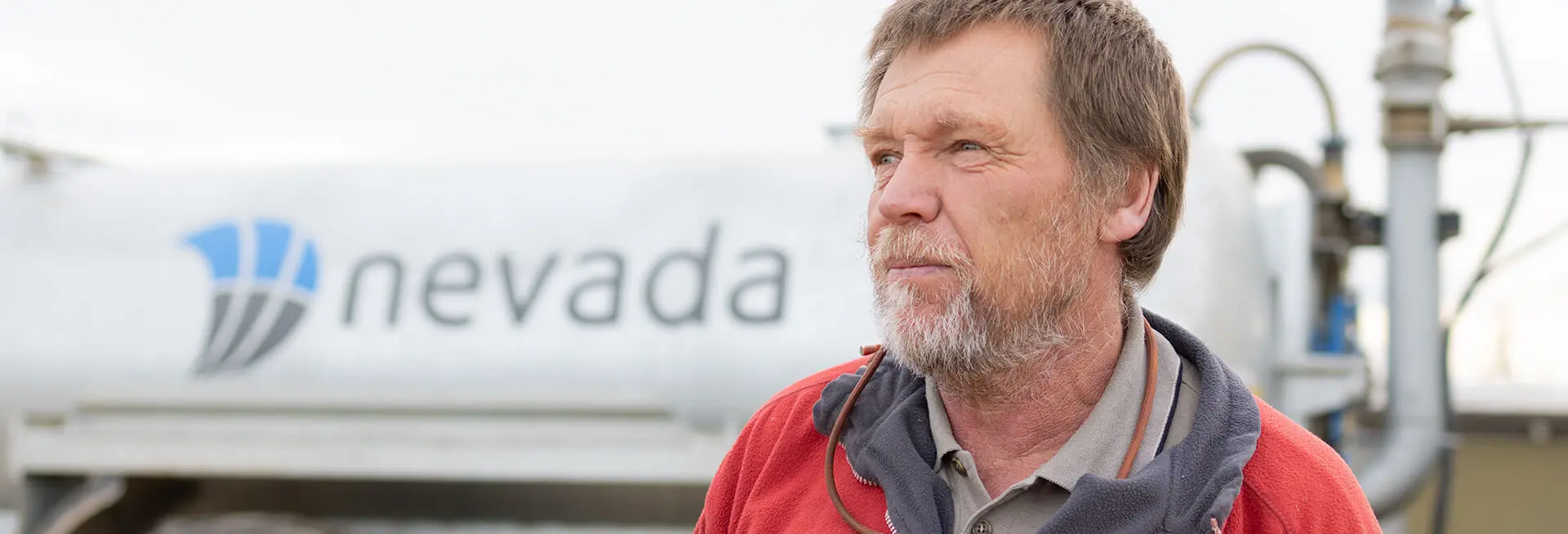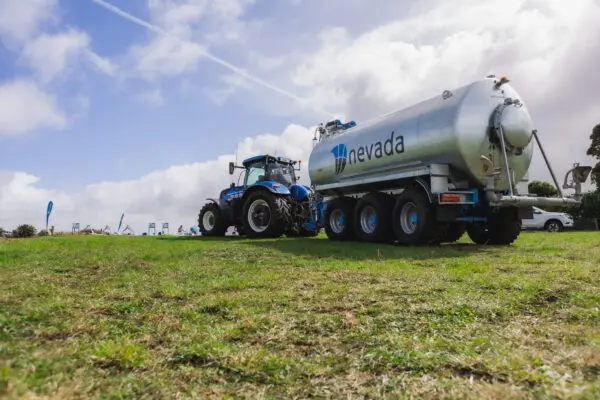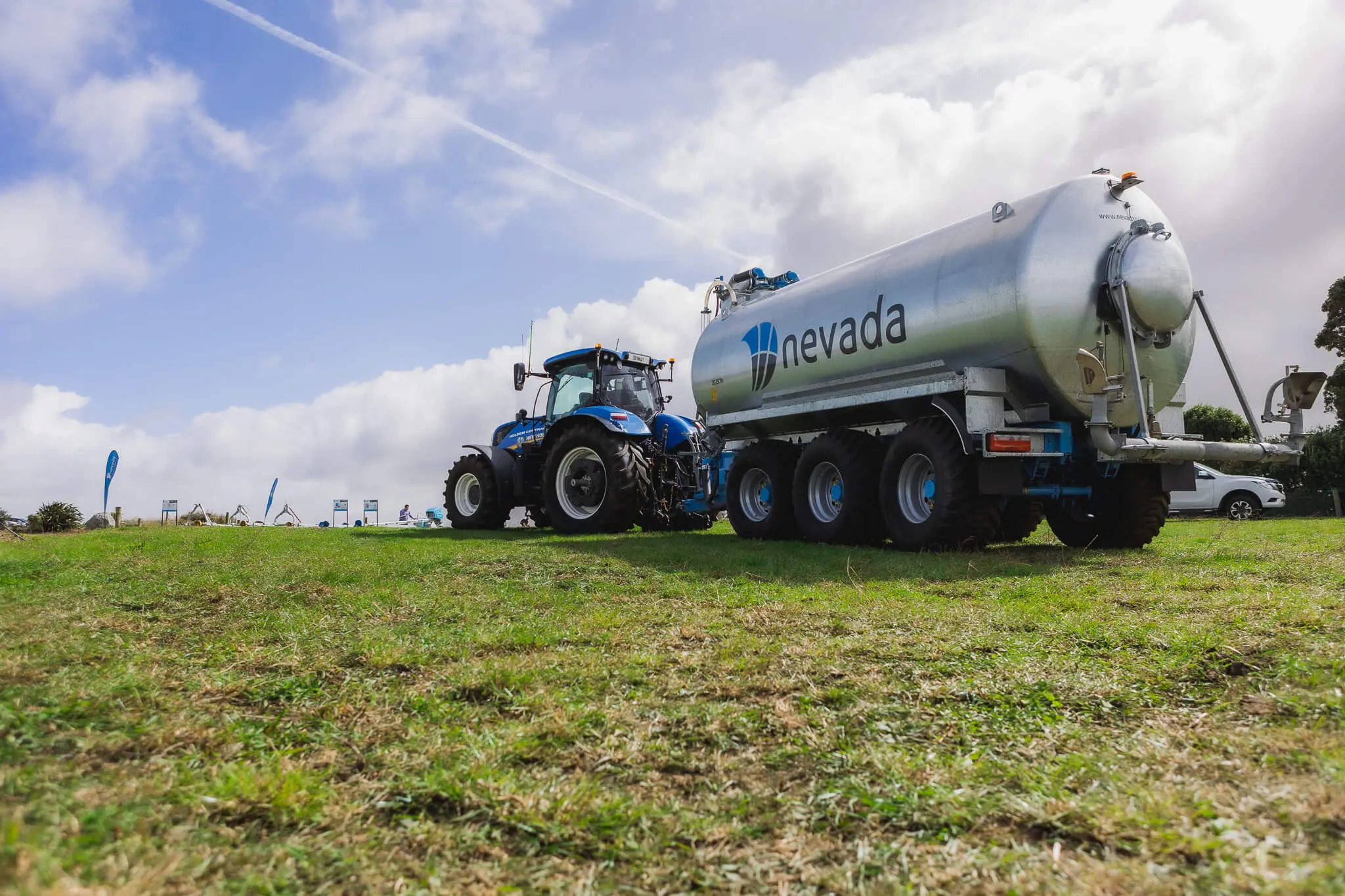Previously effluent handling was managed using a three pond and travelling irrigator system, comprising of: a stone trap; main settlement pond and a concrete cone pond – from which the irrigators were pump fed from a floating inlet. The irrigators provided a total available spread area of approximately 30 hectares. This method was at risk of failing to be compliant as stock numbers have increased from 350 cows.
‘When researching my options it came down to two providers. I chose Nevada because of their reputation for quality, their value for money and better features, like the hydraulic arm on the tanker. With this I don’t need to get out of the cab to refill.’ Clyde said.
Clyde and Jan purchased a 14,700 litre Nevada slurry tanker with a RainWave™ applicator attachment and a PTO slurry stirrer (TurboStir™ 6000).
Clyde contacted Nevada for advice on transforming their system into something futureproofed and council compliant. Their new effluent system still uses the existing stone trap which feeds to the main settlement pond. The main pond has the capacity to retain about a month’s effluent. This is usually kept at around half full to provide freeboard for rain and times when conditions are unsuitable for spreading. Clyde has retained the standing concrete cone pond solely as a redundant back up.
‘Even on half power the stirrer can completely mix the main pond in under 10 minutes, stirring the sediment and any crust to an even suspension that’s full of nutrients.The rolling nature of our land is suited to tanker spreading, though you still need to be careful on wet grass. We are no longer limited to the 30 hectare range of the travelling irrigators. Our whole farm is now available for dispersal and at the low rate of around 1.5ml, following the cows, the ground will not be overloaded.’
Clyde manages spreading areas using GPS on board his tractor. ‘With our earlier system a kink in the hose or a broken wire could lead to effluent being poured out at a single spot – and we end up being non-compliant because we have created a puddle. Now though, with this system, we have done away with all that and I don’t ever have to worry about that type of thing happening.’
‘To be honest the fertiliser saving, of around 16-20 tonnes, using effluent spreading was not as much as I was expecting. I think though that the real value is in the organics. Getting the ground biology working correctly is far better than applying fertiliser, and since I can apply it evenly, rather than as cows do, I can get good even growth and less leeching.’
Now we can get more benefit from the effluent and with the whole farm available we can improve paddock nutrient levels, like spreading in areas that normally carry less dung. Paddocks we’ve always treated never needed fertiliser and we can now get that benefit across the whole farm. In fact I’m looking forward to utilising the Nevada system on a few paddocks of fodder beet crops in the coming season.’





